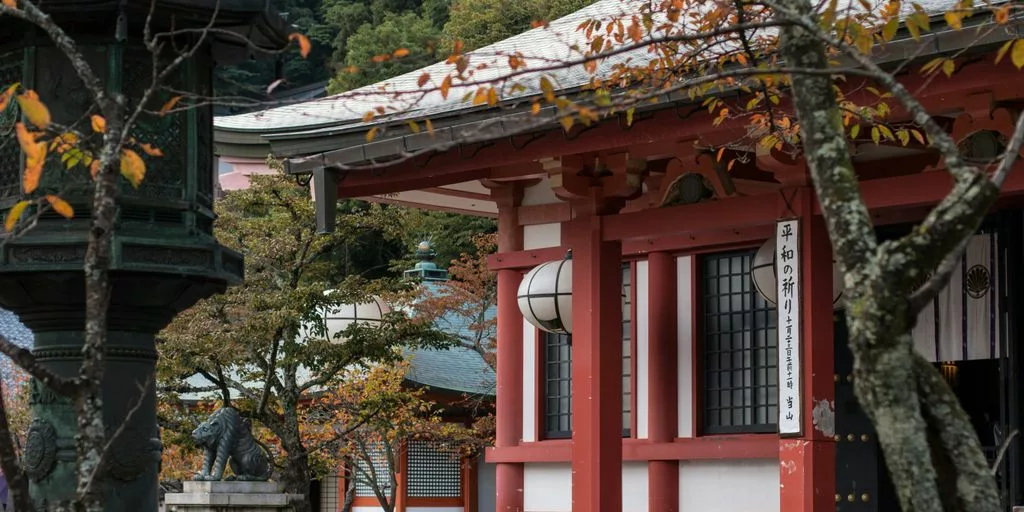
The Timeless Temples of Kyoto
Kyoto’s spiritual landscape is adorned with over 1,600 temples and shrines, each offering a captivating journey through Japan’s rich cultural history. These sites are not just architectural marvels but also testaments to the city’s enduring legacy. Let’s delve into some of Kyoto’s most iconic temples and discover their unique charms.
Kinkaku-ji: The Golden Pavilion
Kinkaku-ji, also known as the Golden Pavilion, is a stunning example of Zen Buddhist architecture. The temple’s top two floors are completely covered in gold leaf, creating a mesmerizing reflection on the surrounding pond. This iconic site is a must-visit for anyone exploring Kyoto.
Ryoan-ji: The Zen Rock Garden
Ryoan-ji is famous for its Zen rock garden, a masterpiece of minimalism and tranquility. The garden features 15 rocks laid out in a way that only 14 are visible at any one time, symbolizing the idea of completeness and imperfection. It’s a perfect spot for meditation and reflection.
Kiyomizu-dera: The Pure Water Temple
Kiyomizu-dera, meaning "Pure Water Temple," is renowned for its wooden stage that juts out from the main hall, offering breathtaking views of the cherry and maple trees below. The temple is also famous for its Otowa Waterfall, where visitors can drink from three streams, each believed to confer a different benefit: longevity, success, and love.
Traditional Arts and Crafts

Kyoto is a treasure trove of traditional arts and crafts, where centuries-old techniques are still practiced by skilled artisans. From the delicate art of flower arranging to the intricate weaving of kimono fabrics, Kyoto’s craftsmanship is a testament to its rich cultural heritage.
Culinary Delights of Kyoto
Kyoto’s culinary scene is a feast for the senses. The city is renowned for its kaiseki, a multi-course dining experience that emphasizes seasonal ingredients and exquisite presentation. Restaurants like Kikunoi and Hyotei offer kaiseki meals that are as much a visual art form as they are a gastronomic delight.
Kaiseki: The Art of Japanese Fine Dining
Kaiseki is the epitome of Japanese haute cuisine. This traditional multi-course meal showcases the finest seasonal ingredients, prepared with meticulous attention to detail. Each dish is a work of art, reflecting the harmony and balance of flavors that define Kyoto’s culinary heritage.
Matcha: The Green Tea Experience
Matcha, or powdered green tea, is an integral part of Kyoto’s culinary culture. From traditional tea ceremonies to modern desserts, matcha offers a unique and vibrant flavor. Don’t miss the chance to try matcha sweets, which are a perfect blend of bitterness and sweetness.
Street Food: Nishiki Market
Nishiki Market, known as "Kyoto’s kitchen," is a bustling hub of culinary delights. Here, you can sample a variety of street foods, from savory skewers to delicate sweets. It’s the perfect place to dive into the local food scene and discover the authentic flavors of Kyoto.
Festivals and Celebrations
Kyoto’s vibrant and diverse festivals provide a unique window into the city’s rich cultural heritage. Each event offers visitors an immersive experience of Japanese history, traditions, and artistic expressions. Let’s embark on an in-depth exploration of some of the top festivals in Kyoto, unveiling the unique charm that makes each one truly special:
Exploring Kyoto’s Historic Districts
Step into the enchanting world of Gion, Kyoto’s most famous geisha district. Wander through traditional wooden machiya houses and exclusive teahouses. The atmosphere here is a blend of old-world charm and cultural richness, making it a must-visit for anyone wanting to experience the essence of Kyoto.
Higashiyama is a treasure trove of historic streets like Ninenzaka and Sannenzaka. These cobblestone paths are lined with shops and teahouses, leading up to the iconic Kiyomizu-dera Temple. Immerse yourself in the atmosphere of old-world Japan as you wander past charming tea houses, artisan workshops, and centuries-old landmarks.
Arashiyama offers a serene escape with its famous Bamboo Grove. This district is perfect for a leisurely stroll, where you can take in the natural beauty and tranquility. Don’t forget to snap photos of the picturesque scenery along the way!
Spiritual Journeys in Kyoto
Fushimi Inari Shrine: The Thousand Torii Gates
Step into a world of spiritual awakening at Fushimi Inari Shrine, where thousands of vibrant red torii gates create a mesmerizing pathway. This iconic site is a must-visit for anyone looking to delve into Kyoto’s spiritual essence. Wander through the seemingly endless gates and feel the serene energy that has drawn pilgrims for centuries.
To-ji Temple: The Five-Story Pagoda
Marvel at the architectural splendor of To-ji Temple, home to Kyoto’s tallest pagoda. This historic site offers a tranquil escape from the city’s hustle and bustle. The five-story pagoda stands as a testament to ancient craftsmanship and spiritual devotion. Don’t miss the monthly flea market, where you can find unique treasures and immerse yourself in local culture.
Heian Shrine: The Grand Torii Gate
Experience the grandeur of Heian Shrine, marked by its massive torii gate. This shrine is a symbol of Kyoto’s rich cultural heritage and offers a peaceful retreat in the heart of the city. Stroll through the expansive gardens and take in the beauty of traditional Japanese landscaping. The shrine’s vibrant festivals are a perfect opportunity to witness Kyoto’s living traditions.
Conclusion
Kyoto stands as a testament to Japan’s rich cultural heritage, offering a unique blend of ancient traditions and modern vibrancy. From its historic temples and serene gardens to its exquisite cuisine and traditional crafts, Kyoto provides an immersive experience that captivates the heart and soul. Whether you’re strolling through the bamboo groves of Arashiyama, participating in a tea ceremony, or exploring the bustling streets of the Geisha district, Kyoto invites you to step back in time and appreciate the artistry and beauty that define this remarkable city. As you leave Kyoto, you’ll carry with you not just memories, but a deeper understanding and appreciation of Japan’s cultural legacy.
Frequently Asked Questions
What is the best time of year to visit Kyoto?
The best time to visit Kyoto is during the spring (March to May) when the cherry blossoms are in full bloom, or in the fall (October to November) when the autumn leaves are at their peak.
How many days should I spend in Kyoto?
A minimum of three to four days is recommended to fully experience Kyoto’s cultural heritage, including its temples, traditional arts, and historic districts.
Is it necessary to book tickets in advance for Kyoto’s attractions?
While some popular attractions like the Kinkaku-ji Temple and Fushimi Inari Shrine do not require advance booking, it is advisable to book in advance for guided tours and special events, especially during peak tourist seasons.
What are some must-try foods in Kyoto?
Some must-try foods in Kyoto include Kaiseki (traditional multi-course meal), Matcha (green tea), Yudofu (tofu hot pot), and street food from Nishiki Market.
Are there any cultural etiquettes I should be aware of when visiting Kyoto?
Yes, it is important to be respectful of local customs and traditions. For example, always remove your shoes when entering temples and traditional inns, and be mindful of noise levels in quiet areas like temples and gardens.
Can I experience traditional arts and crafts in Kyoto?
Absolutely! Kyoto offers numerous opportunities to experience traditional arts and crafts, such as Ikebana (flower arranging), pottery workshops, and Nishijin weaving demonstrations.







3 thoughts on “Exploring the Rich Cultural Heritage of Kyoto, Japan”
Comments are closed.